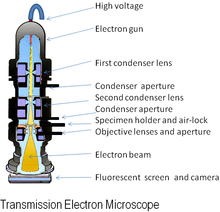The prokaryotes are a group of organisms that lack a cell nucleus or any other membrane-bound organelles. Most are unicellular, but a few prokaryotes such as myxobacteria have multicellular stages in their life cycles. The size of prokaryotes is 0.2 to 2.0μm in diameter and 2 to 8μm in length. There are three basic shapes which are coccus, bacillus and spiral. Examples of cocci are diplococci, staphylococci, and streptococci. Examples of bacilli are diplobacilli and streptobacilli. Examples of spiral are vibrio, spirillum and spirochetes. Diplococci is in pairs, streptococci is in chain, staphylococci is grape-like cluster, tetrads is four cocci in a square and sarcinae in cubic configuration of eight cocci. The structures external to the cell wall is glycocalyx, flagella, axial filaments and fimbriae and pili. Glycocalyx is substance that surround cell and it is made inside the cell and excreted to the cell surface. The function of glycocalyx is protection from phygocytosis, attachment to various surfaces, source of nutrients and protect a cell against dehydration. Flagella is threadlike, locomotor appendages extending outward from plasma membrane and cell wall. Th e function of flagella is motility and swarming behavior, attachment to surfaces and may be virulence factors. The axial filaments is bundle of fibrils that arise at the ends of the cell beneath the outer sheath. Fimbriae and pili is hairlike appendages that are shorter, straighter and thinner than flagella. It consist of a protein called pilin arranged helically around a central core.
The cell wall surrounds the cytoplasmic membrane and not a regulatory structure like cytoplasmic membrane. Composition and characteristics of cell wall is composed of a macromolecular network called peptidoglycan. Peptidoglycan consists of a repeating disaccharide. The disaccharide portion is made up of monosaccharieds called N-acetylglucosamine (NAG) and N-acetylmuramic acid (NAM). Alternating NAM and NAG molecules are linked in row by glycosidic bonds and adjacent rows are linked by peptide bonds. Functions of cell wall is prevent bacterial cell from rupturing when the water pressure inside the cell is greater than that outside the cell, contributes to pathogenicity, maintain characteristics shape, provides a rigid platform and counters the effect of osmotic pressure. Cell wall have two major types of walls which are Gram-positive and Gram-negative. Gram positive cell walls consists of many layers of peptidoglycan. Periplasmic space of Gram positive bacteria lies between plasma membrane and cell wall and is smaller than that of Gram- negative bacteria. Teichoic acid is primarily of an alcohol and phosphate, negatively charged, provide much of the wall' s antigenic specificity and cell walls do not degrade as easily. Two classes of teichoic acids which are lipoteichoic acid and wall teichoic acid. Gram negative cell wall consists of one or very few layers of peptidoglycan . The peptidoglycan is bonded to lipoprotein and does not contain teichoic acid. Periplasmic contains a high concentration of degrading enzymes and large number of transport proteins. Gram-negative cell wall consist of outer membrane is outer membrane consists of lipoproteins, lipopolysaccharides, phospholipids and porins, strong negative charge, and provide a barrier to certain antibiotic, lysozyme, detergent, heavy metals, bile salts and certain dyes.
Atypical cell walls is mycoplasma, chlamydiaceae and archaea. Mycoplasma cells have no walls or have very little wall material. It's membrane contain sterols, which impart rigidity to the membrane and can pass through most bacterial filters. Plasma membranes are unique in having lipids called sterols which protect them from osmotic lyses. Chlamydiaceae have two membrane, some genes for peptidoglycan synthesis found in genome and obligate intracellular parasites. Archaea are lack of peptidoglycan in their cell walls. Some species have cell wall consisting of polysaccharide, glycoprotein or protein but not peptidoglycan. However, contain a substance similar to peptidoglycan called pseupeptidoglycan. Most common wall type is paracrystalline surface layer (S-layer) made of protein or glycoprotein with hexagonal symmetry. S-layer surface, or outermost layer forming "lipidless membrane", found on Archaea a few in Gram-positive and Gram-negative, composed of repeating subunits of protein or glycoprotein, protect against osmotic stress, pH and enzyme and aid in attachment and inhibit phagocytosis. Archaea are naturally resistant to lusozyme and penicillin.












